Geology Reference
In-Depth Information
Fig. 4.51
Part of a true-amplitude seismic section containing a seismic bright spot associated with a local hydrocarbon accumulation.
(From Sheriff 1980, after Schramm
et al
. 1977.)
observed in true-amplitude seismic sections is carried
out by
seismic modelling
, often referred to in this context
as
stratigraphic modelling
. Seismic modelling involves
the production of synthetic seismograms for layered
sequences to investigate the effects of varying the model
parameters on the form of the resulting seismograms.
Synthetic seismograms and synthetic seismic sections
can be compared with observed data, and models can be
manipulated in order to simulate the observed data. By
this means, valuable insights can be obtained into the
subsurface geology responsible for a particular seismic
section. The standard type of synthetic seismogram
represents the seismic response to vertical propagation of
an assumed source wavelet through a model of the
subsurface composed of a series of horizontal layers of
differing acoustic impedance. Each layer boundary
reflects some energy back to the surface, the amplitude
and polarity of the reflection being determined
by the acoustic impedance contrast. The synthetic
seismogram comprises the sum of the individual
reflections in their correct travel-time relationships
(Fig. 4.52).
In its simplest form, a synthetic seismogram
x
(
t
)
may be considered as the convolution of the assumed
source function
s
(
t
) with a reflectivity function
r
(
t
)
representing the acoustic impedance contrasts in the
layered model:
However, filtering effects along the downgoing and
upgoing ray paths and the overall response of the record-
ing system need to be taken into account. Multiples
may or may not be incorporated into the synthetic
seismogram.
The acoustic impedance values necessary to compute
the reflectivity function may be derived directly from
sonic log data (as described in Section 11.8).This is nor-
mally achieved assuming density to be constant through-
out the model, but it may be important to derive
estimates of layer densities in order to compute more
accurate impedance values.
Synthetic seismograms can be derived for more com-
plex models using ray-tracing techniques.
Particular stratigraphic features that have been investi-
gated by seismic modelling, to determine the nature of
their representation on seismic sections, include thin
layers, discontinuous layers, wedge-shaped layers, transi-
tional layer boundaries, variable porosity and type of
pore fluid. Figure 4.53 illustrates synthetic seismograms
computed across a section of stratigraphic change.These
show how the varying pattern of interference between
reflection events expresses itself in lateral changes of
pulse shape and peak amplitude.
4.14.4 Seismic attribute analysis
Conventional seismic reflection sections are displayed
in variable-area format where positive half-cycles of the
(
)
=
(
)
(
)
xt
st
rt
*


